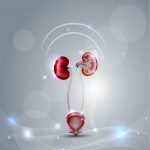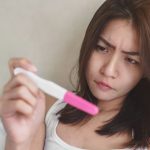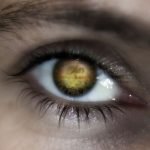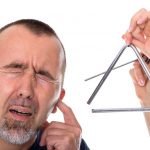Hysterectomy with Risk of Heart Disease and Other Cancers
New Study Links Ovarian Removal to Other Heightened Risks
A new study looks at the link between ovarian removal and increased risks of heart disease, cancer and all-cause mortality.(1) The study is the largest of its kind and looked at 113,679 cases of women aged 35-45 over a ten year period of time (2004-2014) who either had all ovarian tissue removed or didn’t during hysterectomy with benign disease. Bilateral oophorectomy is routinely performed during hysterectomy as a means of decreasing the risk for developing ovarian cancer.
Ovaries are Never Really Over
The ovaries produce most of the estrogen and testosterone for a women’s body, both of which have vast importance for regulating metabolism, bone density, muscle integrity, and mood, just to name a few. For women who are premenopausal, oophorectomy is surgically induced menopause, as estrogen levels plummet. Even for peri- or postmenopausal women, the ovaries are never absolutely dormant. They still produce small amounts of estrogen and testosterone which are still metabolically active in the same way; removal of this important endocrine gland is beginning to be acknowledged for the mistake that it has always been.
Study Finds
The study found that women who maintained ovarian tissue after hysterectomy – either one or both – were less likely to develop ischemic heart disease, or cancer, than those who had bilateral ovarian removal. There was also a slight correlation between premature death and bilateral ovarian removal.
Unnecessary Oophorectomy with the Hysterectomy
Cardiovascular disease is among the most common causes of death in women, making it crucial that specific protocols which increase that risk be seriously questioned. It is becoming more and more clear, with studies like this one, that when it comes to the ovaries, oophorectomy is not recommended as a routine aspect of hysterectomy in benign disease.
Sources:
- Mytton J, Evison F, Lilford RJ, et al. Removal of all ovarian tissue versus conserving ovarian tissue at time of hysterectomy in premenopausal patients with benign disease: study using routine data and data linkage. BMJ 2017; 356 doi: https://doi.org/10.1136/bmj.j372
- Havelock JC, Bradshaw KD, Carr BR. The post-menopausal ovary displays a unique pattern of steroidogenic enzymeexpression. Hum Reprod. 2006 Jan;21(1):309-17. Epub 2005 Oct 27.
 Node Smith, associate editor for NDNR, is a fifth-year naturopathic medical student at NUNM, where he has been instrumental in maintaining a firm connection to the philosophy and heritage of naturopathic medicine amongst the next generation of docs. He helped found the first multi-generational experiential retreat, which brings elders, alumni, and students together for a weekend campout where naturopathic medicine and medical philosophy are experienced in nature. Three years ago he helped found the non-profit, Association for Naturopathic ReVitalization (ANR), for which he serves as the board chairman. ANR has a mission to inspire health practitioners to embody the naturopathic principles through experiential education. Node also has a firm belief that the next era of naturopathic medicine will see a resurgence of in-patient facilities which use fasting, earthing, hydrotherapy and homeopathy to bring people back from chronic diseases of modern living; he is involved in numerous conversations and projects to bring about this vision.
Node Smith, associate editor for NDNR, is a fifth-year naturopathic medical student at NUNM, where he has been instrumental in maintaining a firm connection to the philosophy and heritage of naturopathic medicine amongst the next generation of docs. He helped found the first multi-generational experiential retreat, which brings elders, alumni, and students together for a weekend campout where naturopathic medicine and medical philosophy are experienced in nature. Three years ago he helped found the non-profit, Association for Naturopathic ReVitalization (ANR), for which he serves as the board chairman. ANR has a mission to inspire health practitioners to embody the naturopathic principles through experiential education. Node also has a firm belief that the next era of naturopathic medicine will see a resurgence of in-patient facilities which use fasting, earthing, hydrotherapy and homeopathy to bring people back from chronic diseases of modern living; he is involved in numerous conversations and projects to bring about this vision.










